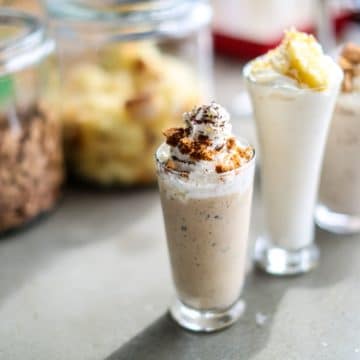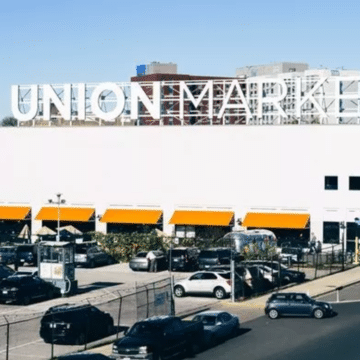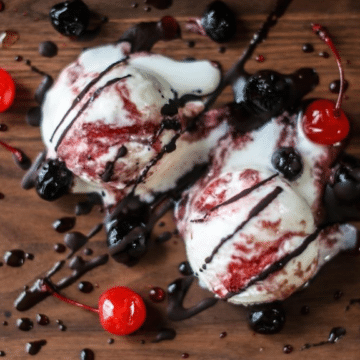Originally published on BonAppetit.com
Welcome to Out of the Kitchen, our ongoing exploration of the relationships that build and sustain the food industry. This year, we’re traveling the country to look at the changing landscape of food markets. Hyper-local markets—filled with myriad grocery, retail, and restaurant options like the ones found in Europe—are on the rise. These markets benefit from their interconnected buying power but operate like small, independent businesses, allowing them to focus on quality ingredients, culinary innovation, and intimate, personal customer service. Through quality, personal touches, and exceptional product, these new food halls are revolutionizing retail one transaction at a time.
Though their gelateria may have started off as Robb Duncan’s love letter to his wife, it’s ended up as a long-term relationship with his customers’ taste buds.
Dolcezza started out in 2004 as a humble crack-in-the-wall store in Georgetown manned by a couple who freely admitted they had no idea what they doing. Now it’s a wildly popular gelato empire that’s spreading across the mid-Atlantic, is sold everywhere from the Senate building to the Smithsonian, and is headquartered in a new, state-of-the-art facility in Washington, D.C.’s Union Market neighborhood—but still hasn’t lost its personal touch.
But it all really began with a trip.
In 1999, Duncan was a Portland, Oregon, software coder who’d decided almost on a whim to fly down to Manaus, Brazil, to attend a conference on the Amazon rainforest. There he met Violeta Edelman, a documentary filmmaker and student from Buenos Aires, Argentina. The two obviously hit it off—Duncan quit his job six months later and flew down to Manaus again to meet up with Edelman. Together, they spend the next three months traveling thousands of miles through the Amazon and along the Brazilian coast. When Duncan returned to Oregon, it was only to close that chapter in his life and move to Buenos Aires with Edelman.
“We’d had this amazing trip together, and I told her, ‘I want to come and see your family, your city, and Buenos Aires,'” he says. “The very first night, her folks picked me up at the airport, and we had a typical Argentine barbecue, asado, on the patio. Then we went walking about in her neighborhood.”
And that’s where the gelato comes in.
“She lived essentially across the street from Freddo, the most popular gelato spot in Buenos Aires, which has a bunch of them,” Duncan says. “It was the best I’d ever had so far. It was way better than anything I’d had back in the States. I said, ‘We should do this.'”
Fast-forward a couple years, a wedding, and an Argentinian economic crisis, and Duncan, his new wife, and his in-laws were in a 300-square-foot storefront in Georgetown, churning out ten gallons of gelato a day in the space’s tiny, dimly lit basement. When they weren’t in the tiny Georgetown shop, they were selling their pints at up to 10 different farmers markets each week.
“We jumped in and figured it out,” Duncan says. “No business plan, no forethought. It’s the more painful way to learn, but it’s the best way to learn, because you’re in the fire–you have to figure out everything top to bottom, and in and out.
“That’s when it really happened: I kind of went a little bit nuts for a good year. I always say obsession is greatly rewarded in the kitchen, and I really just lost myself in this whole world.“
Perhaps the greatest revelations came from putting in time at the farmers’ markets. He wasn’t just trading with farmers for the ingredients used in Dolcezza gelato—a tray of gelato push pops for a couple flats of blackberries and lemon thyme, for example—he was also learning all about the ingredients and how best to pick and use them.
“We’d go out to farms and talk about dirt and compost and the microorganisms in the soil, and the heirloom varieties,” Duncan says. “I learned that strawberry season only lasts for five weeks from Mother’s Day to the end of June. I learned what grows in our area, who’s got the best stuff, the eight varieties of strawberries that grow here, and the nuances and the differences of the land they grow in—like the richness of the fruits grown in Loudoun County. When I asked the farmers, ‘What will you do with your strawberries?’ the strawberry farmers would say, ‘Have you ever tried a strawberry-tarragon salad?’ And that became our strawberry-tarragon sorbet. Whatever’s growing here in the area, that’s what dictates our menu. This year, I knew we could make nothing with apricots and cherries because of the late freeze—before I got into this, I could not even tell you what grew in our area.”
Duncan says it took him “a good four, five years” to “hash out the menu,” which grew to over 200 flavors. In the meantime, Dolcezza grew a following all around the D.C. area. The company will soon have eight brick-and-mortar stores around the capital, including one in Bethesda, Maryland, and one in Fairfax, Virginia. Last year, Duncan and Edelman moved the hub of the operation to a 3,000-square-foot facility in the Union Market, just a block outside the main market building. The new HQ has a tasting room where customers can try the latest gelato flavors made in the open-view kitchen only a couple yards away.
“People can come into our kitchen and see our production, and then eat it in the tasting room—the only stuff we serve is the stuff falling off the line at the moment,” Duncan says. “You can’t one-up the quality.”
And even though the company’s making some 350 gallons a day instead of ten—Dolcezza gelato is served in 120 restaurants and hotels in the area, as well as at the U.S. Senate building, the Smithsonian and other D.C.-area museums, and will soon be available at all 44 Whole Foods in the mid-Atlantic region.
Duncan and Edelman conceive of, develop, and make with their own hands. The couple still get many of their ingredients by personally bartering with fellow stand operators at the farmers markets’ they sell at.
“Two days before the market on Thursday we’re calling the farmer and saying, ‘Hey, Zach, can you bring me 50 pounds of crookneck pumpkins and 20 pounds of ginger?'” Duncan says. “And they’ll bring it to the farmers’ market, and at the end of the day we’ll bring it back to the factory.”
It’s a lot of work, but the payoff is worth it, he says.
“There’s a lot of people in the shops who come into eat our gelato,” Duncan says. “And it makes them happy. Really, really happy.”


